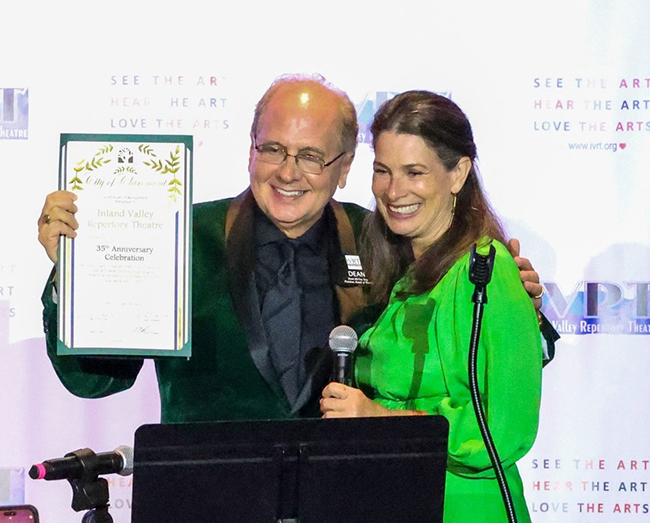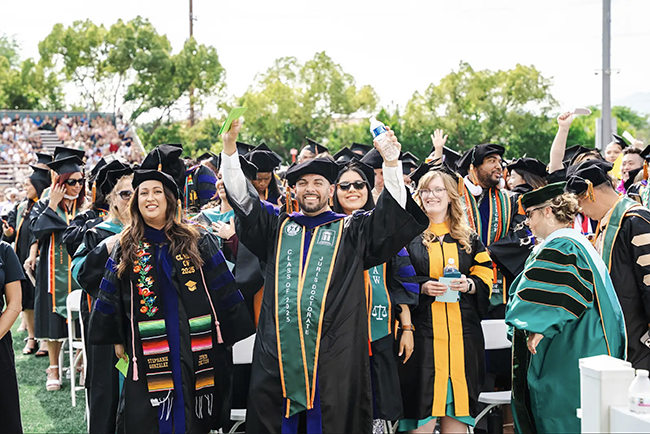Study of wildlife aided by trail cameras
Claremont, the eastern gateway to Los Angeles County and the western ingress to San Bernardino County, is a border town.
But the City of Trees sits astride another, less widely known but equally important boundary: the urban/wildland interface. The north Claremont foothills are a transition zone or “ecotone” between two ecosystems, coastal sage scrub and chaparral.
It’s fertile ground, biologically speaking, and it’s where Paul Faulstich does his work, makes his art and follows his passion.
“It started out as curiosity,” said Mr. Faulstich, a 27-year professor of environmental analysis at Pitzer College, of the trail cameras he has installed in and around the Claremont foothills the past five years. “I was interested to see what was up here. I was quickly surprised when, after just a short while, I got a mountain lion. I wasn’t expecting that. It really intrigued me, so I sort of amped it up.”

“The thing that interests me about the trail cams is they capture imagery of animals fully in a natural environment, and engaged in their natural activities,” Mr. Faulstich said. “They’re not being observed or affected by my presence. I find that a really compelling component. There’s also then an element of chance.”
Mr. Faulstich, 61, is trained as a cultural anthropologist. His research engages ecological concepts and translates them through art and digital media in a multidisciplinary approach called “visual anthropology.”
His scholarly work is focused primarily on “mesopredators,” medium-sized predators that often prey on small animals. Local mesopredators include coyotes, foxes, skunks and raccoons.
Some of the animals that prey on mesopredators are “hypercarnivore apex predators” such as mountain lions and snakes. And as the hypercarnivore apex predator population decreases, which often occurs when humans encroach on their habitats, mesopredator populations can increase in response, he said.
His work straddles anthropology, ecology, art, and inherently, activism. Over the past four years he has presented at public schools, libraries and for organizations such as Rancho Santa Ana Botanic Garden and the Sierra Club.
“As humans, our relationship with the world is profoundly affected by the images that we use to understand and express our place in nature,” Mr. Faulstich said. “I think artists employ skills that can uniquely address strategies for environmental awareness, reform and conservation. Artists play a powerful role, serving as the conscience of culture and even offering creative solutions. I’m hoping my images can be utilized in a variety of ways—from fostering visual insights, and just simply appreciation, to providing some notion of what our dilemmas are and what our solutions can be. Responding to our current environmental crisis is arguably the most critical challenge of our era, and I’m seeking justice for all species.”
He can’t provide specific locations, but the cameras are “right at the urban/wildland interface,” Mr. Faulstich explained. Some are in Claremont Wilderness Park, where the city has granted him special permission to conduct research with the caveat that the camera locations remain confidential. The more remotely located cameras are about a 90-minute trek up into the hills, roughly two miles from the nearest road.
There are a few cameras located within a stone’s throw of homes and humans. They aren’t intended to watch us, but to note the impact humans have on the animal population.
His research has also uncovered some surprises. Among them are that local deer are using us in a behavior called “human shielding.”
“The predators don’t want to come around people, so the deer will tend to come around people in order to safeguard themselves from the mountain lions,” he explained. “So they’ll use us in that way.”
This behavior explains why many residents have reported seeing deer looking so brazenly unconcerned with humans in broad daylight along the Thompson Creek Trail and elsewhere in the foothills.
Mr. Faulstich also has theories about the increased presence on city streets of previously human-averse wild animals such as coyotes.
“We’re pushing up against their habitats,” he said. “So that is either making their populations dwindle, making them retreat further into the foothills, or it’s making them have more interactions with us. Basically I think all of the above are part of what’s going on.”
Another surprise is that coyotes are remarkably rare in the foothills, preferring the lowlands. The reasons are complex, some human-caused and others natural.
For one thing, coyotes know their primary predators—mountain lions—aren’t likely to trot down Indian Hill Boulevard looking for lunch, so they create their dens at wooded, open sites such as the Rancho Santa Ana Botanic Garden and other remote areas. “So, coyotes might be using the suburbs as a sort of predator shield,” Mr. Faulstich posited.
His data has also documented how populations of foxes have fluctuated wildly, while deer and owl numbers have remained relatively stable. It’s also shown how an entire species—the once plentiful brush rabbit—all but disappeared after the 2003 Grand Prix Fire.
“That might have something to do with why we don’t see so many coyotes,” in the foothills, he said.
Mr. Faulstich hopes his work can help raise awareness of our area’s rich ecodiversity. “So often environmental education is focused on distant lands, you know, how we need to protect the rainforests,” he said. “And our local ecosystems—our backyards—are, oddly, overlooked or under-explored in many of these environmental education programs. I want to shift that around and get people to understand how critical our local ecosystems are.”
The trail cam project has been rewarding for a lot of reasons, Mr. Faulstich said.
“These images are my art, they’re my activism, and they’re my meditation. They’re explorations for me into ways of understanding and engaging the increasingly fragile planet that we are so lucky to inhabit during our momentary visit. I’m trying to bring more appreciation and awareness and understanding of what we have locally.”
Mr. Faulstich’s abstract photography will be part of “The Artsy Bunch,” a group show opening tomorrow at Bunny Gunner Gallery, 230 W. Bonita Ave., Claremont. A show of his trail camera images, “Intimate Encounters: Up Close with Claremont’s Wildlife,” opens February 2 at the Claremont Community Foundation, 205 Yale Ave.
Readers can view more of Mr. Faulstich’s photos on his Facebook page.
—Mick Rhodes
mickrhodes@claremont-courier.com










0 Comments